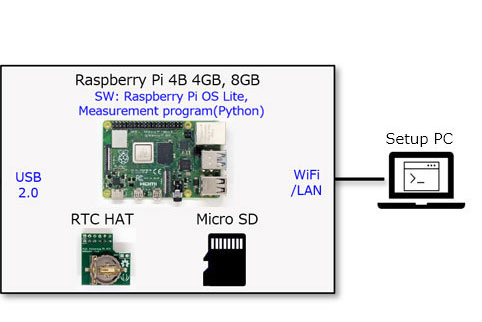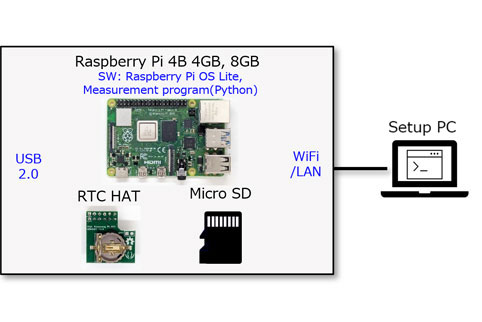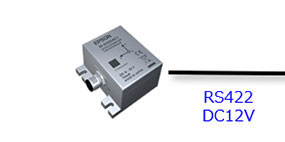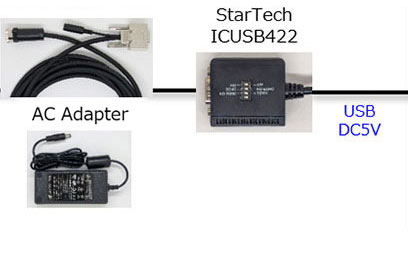Vibration measurement and monitoring system using Raspberry Pi products
Overview
This article introduces a measurement system that connects an acceleration sensor and vibration sensor to a Raspberry Pi, outputting the measured data to a Micro SD card. Using a Raspberry Pi allows for the creation of a compact and power-efficient measurement system, suitable for various measurement targets and locations.
Additionally, a measurement system (see below: Configuration example 2) that connects to a waterproof and dustproof acceleration sensor and vibration sensor can be set up, making it adaptable to specific environments.
This measurement system is compatible with Raspberry Pi 4B and Raspberry Pi 5.
System configuration example
Configuration example 1 (using built-in type sensor)
*An RTC is required to obtain accurate time information when measuring. The equipment and settings required to use an RTC differ between Raspberry Pi 4B and Raspberry Pi 5. Please refer to the manual for details.

Configuration example 2 (using waterproof and dustproof sensor)
*An RTC is required to obtain accurate time information when measuring. The equipment and settings required to use an RTC differ between Raspberry Pi 4B and Raspberry Pi 5. Please refer to the manual for details.

Monitoring app
The vibration measurement system monitoring app is a web application that displays measurement data on a web screen. Users can access the Raspberry Pi from a PC via a web browser and check graphs of sensor status measurement data in real time.
The monitoring app runs on a Raspberry Pi with the following measurement app installed:
Measurement app
* Vibration measurement system using Raspberry Pi products
App image
* If the measurement app determines VC, only the M-A352AD10 or M-A552AR10 sensor can be used in the measurement system.

Web app home screen

Graph screen
* This screen is only displayed when the VC evaluation vibration measurement system is running.
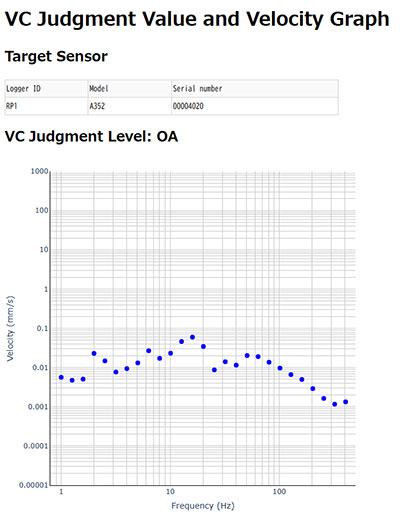
Usage example
Example of use at Mt. Aso
This system was used for long-term earthquake measurement in the volcanic region of Mt. Aso, Kyushu Island, Japan. The system was constructed based on system configuration example 1, and the sensor part was placed in a case and buried underground for measurement. Measurements were successfully completed over two weeks while installed outdoors.
successfully completed over two weeks while installed outdoors.
For more details, please see the case study file "We tried Seismic Vibration Measurements/Analysis in the World's Largest Caldera, Mt. Aso!"
Preparation for measurement
The sensor part was buried in the ground and the Raspberry Pi was covered to protect it from direct sunlight.
* To prevent the Raspberry Pi from overheating, place it out of direct sunlight and consider using a heat sink or fan.
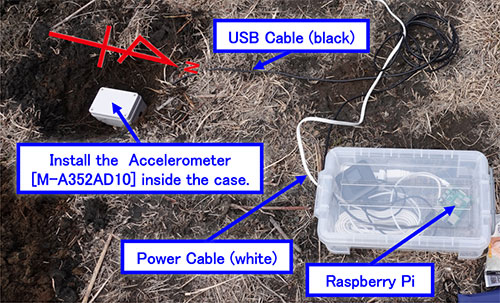
| Case File | Explanation |
|---|---|
| We tried Seismic Vibration Measurements in the World's Largest Caldera, Mt. Aso! | This article introduces a measurement example using this system (Configuration Example 1) in the volcanic region of Mt. Aso, Kyushu Island, Japan. |
| We tried Seismic Vibration Analysis in the World's Largest Caldera, Mt. Aso! | This article introduces the analysis of the earthquake vibration data obtained from the above measurements. |
These articles are based on the following technical papers:
- Title:"Quartz Enhanced Micro Electromechanical Systems Accelerometer for Seismic Monitoring: Field Performance in Volcanic Region."
- Publication:IEEE SENSORS JOURNAL
*Tsuji Laboratory at the University of Tokyo and Seiko Epson, with Dr. R. D. Andajani as the first author.
Long-term measurement in a skyscraper
This system (Configuration Example 1) was used to measure the natural period of a high-rise building. A portable battery was used to secure the power supply, and continuous measurement for 68 hours was possible under the following conditions.
For details, please see the case study file "We tried Measuring a Skyscraper! / We tried Analyzing a Skyscraper!"
| Equipment used | Number of units |
|---|---|
| FLOWREON battery (model number: HP300 / capacity: 220Wh) |
1 |
| Raspberry Pi 4B | 1 |
| Accelerometer M-A352AD10 | 1 |
| Evaluation board M-G32EV041 | 1 |
| Case File | Explanation |
|---|---|
| We tried Measuring a Skyscraper! (Measurement data csv file included) | This article introduces a measurement example using this system (Configuration Example 1) in a skyscraper. |
| We tried Analyzing a Skyscraper! | This article introduces the analysis of the building's natural period obtained from the above measurements. |
When measuring with multiple sensors
Operation has been confirmed under the following measurement conditions.
| Sensor used (built-in type) |
Number of sensors | Sampling rate | USB-C conversion board | USB Hub |
|---|---|---|---|---|
| Vibration Sensor: M-A342VD10 |
4units | 3000sps | Evaluation board:M-G32EV041 | ELECOM U2H-SN4NB |
| Acceleration sensor: M-A352AD10 |
4units | 1000sps |
| Sensor used (waterproof and dustproof type) |
Number of sensors | Sampling rate | How to connect | RS422-USB conversion hub |
|---|---|---|---|---|
| Vibration Sensor: M-A542VR10 |
4units | 3000sps | Guide to Connecting Waterproof/Dustproof Sensor(s) to Host(s) | StarTech ICUSB234854 |
| Acceleration sensor: M-A552AR10 |
4units | 1000sps |
Documentation
| Document | Explanation |
|---|---|
| Setup Manual for Vibration Measurement System using Raspberry Pi Products (PDF,2.1MB) | This is a manual for constructing this measurement system. |
| Operation Manual for Vibration Measurement System using Raspberry Pi Products (PDF,1.2MB) | This is a manual for using the measurement system that you have constructed. |
| Monitoring Application for Vibration Measurement System – User's Guide (PDF, 797KB) | This is a guide for building and using monitoring apps. |
Program
* By using the sample code below, you agree to the license stated in the source file.
* The following sample code is compatible with Raspberry Pi 4B and Raspberry Pi 5.
| Document | Explanation |
|---|---|
| Measurement sample code (Python) (ZIP, 134KB) | This is sample code for a measurement program to be installed on Raspberry Pi. |
| Monitoring app sample code (ZIP, 90KB) | This is the sample code for installing and using the monitoring app. |

